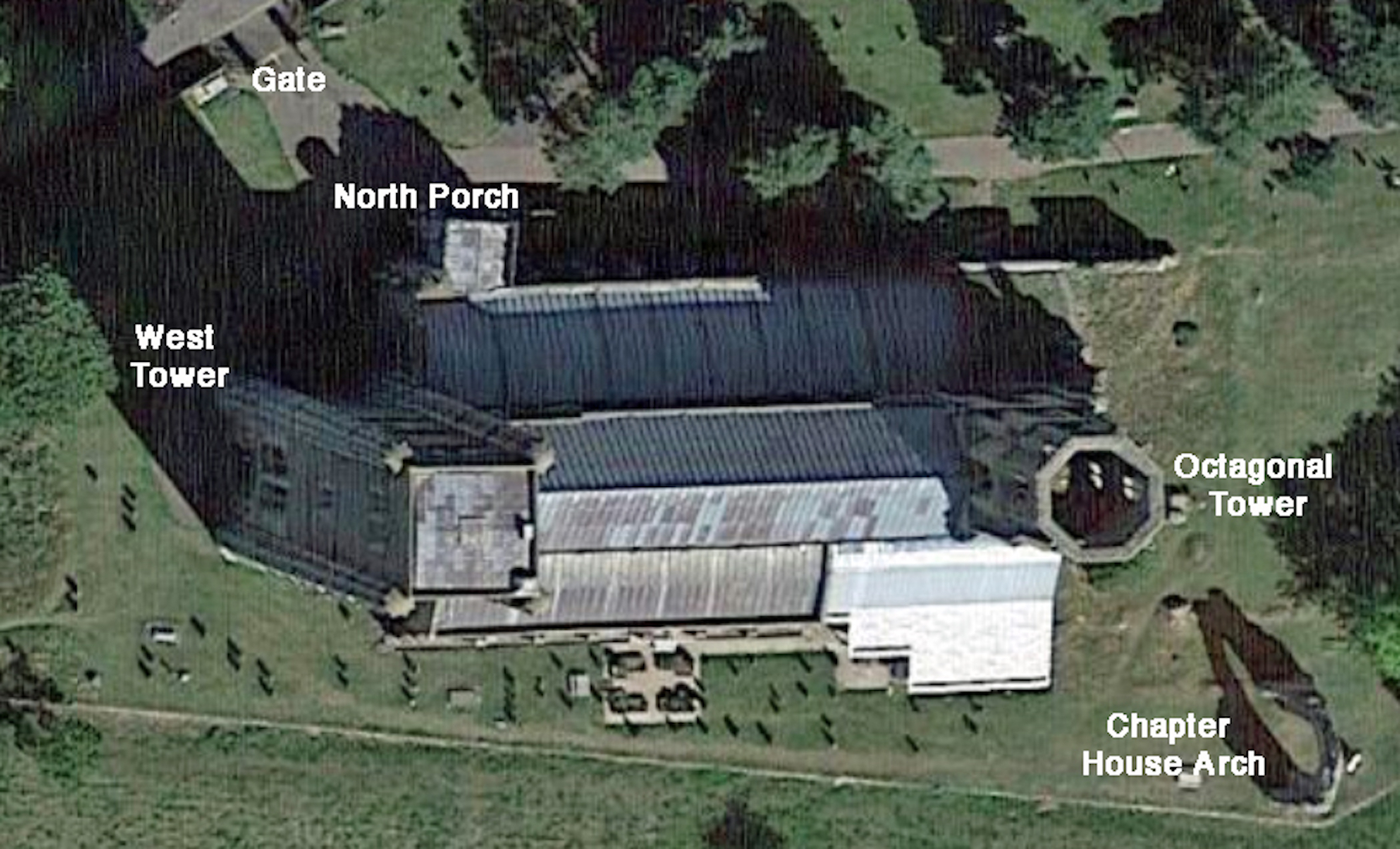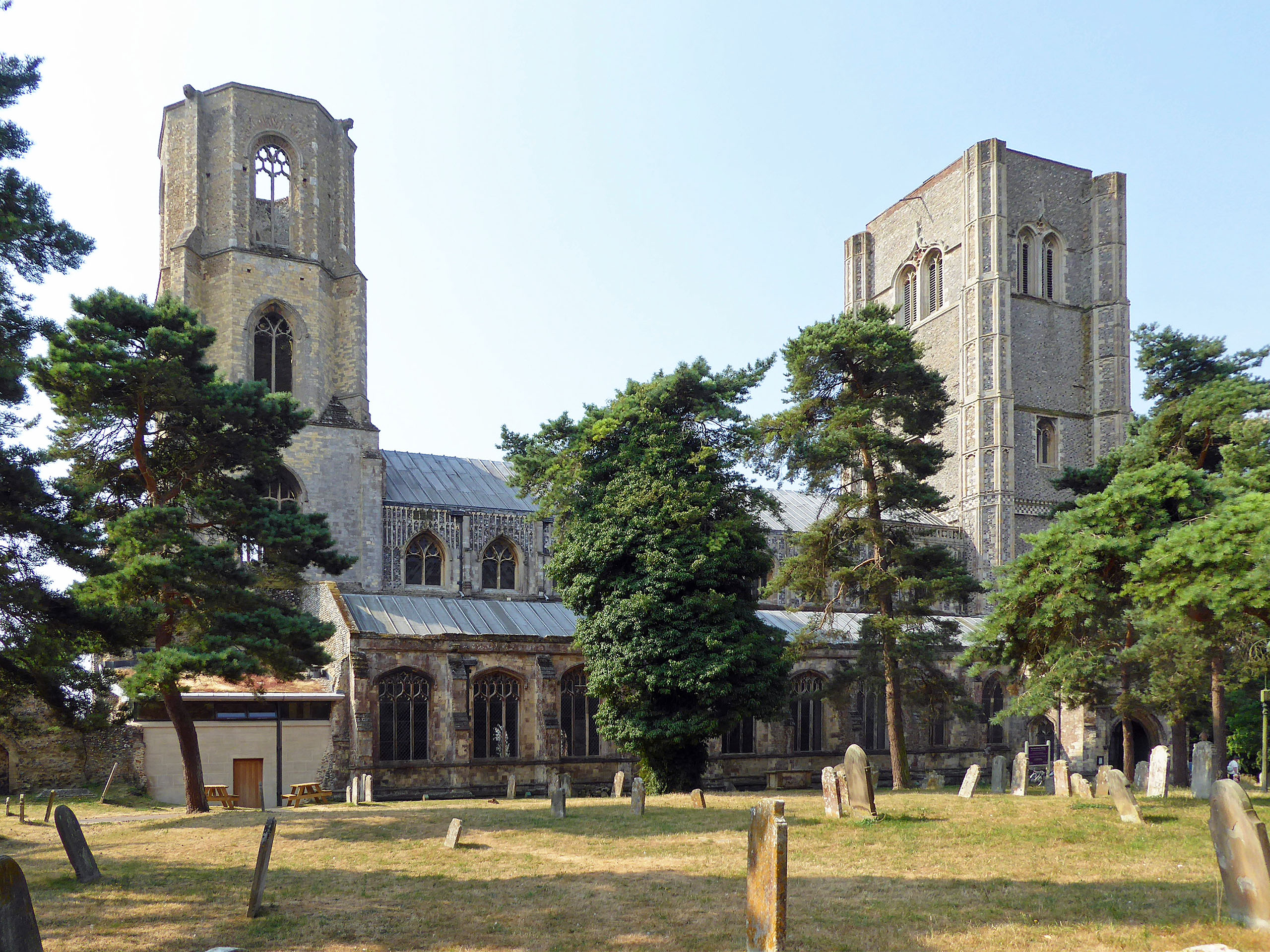INTRODUCTION
This website occurs in the midst of a large number of other websites involving churches and cathedrals around the world which I have photographed. Since last year my overseas travel has been severely curtailed by the COVID virus. I wondered if perhaps there was some overseas photographer who might let me make use of his/her church photographs for the creation of a website. I was aware of the work of Aidan McRae Thomson, and approached him with a proposition to prepare a joint website using his photographs (of Wymondham Abbey). I was delighted when Aidan readily agreed, and this site is the result. Hopefully it will be the first of many such sites.
You can read about Aidan and his work with stained glass on the website:
http://aidanmcraethomsonstainedglass.weebly.com/
Aidan’s vast collection of photographs can be viewed at:
https://www.flickr.com/people/amthomson/
A satellite image and brief history of this Abbey are given below. The history is interesting and well worth reading. However, if you wish to begin your tour of the Abbey Church immediately, tap / click on START . You can also access intermediate points in the tour by a tap / click on the following links:
NOTE ON MAGNIFYING IMAGES
With this website format the images are large enough for most purposes. If there is a need for greater magnification of an image, go to the identical photo on
https://www.flickr.com/photos/amthomson/albums
and download the image as instructed.
SATELLITE VIEW
Wymondham (pronounced Wind’m) is a market town some 15 kilometres southwest of the city of Norwich. It is accessible by rail, and there is a short spur line out to Wymondham Abbey. Unfortunately there no longer seems to be a service on the spur line, so there is a 15 minute walk from Wymondham Station!
This satellite image of Wymondham Abbey is quite revealing.
We notice that the original Church had a geographically east – west orientation with the (original) sanctuary to the east. This means that our liturgical directions (with capital letters, for example, East), exactly coincide with the geographical directions.
The ruined octagonal tower at right was the central tower of the original Abbey Church: the original transepts and chancel/sanctuary have been lost.
What is left is the central nave with two side aisles, the large West tower at left, the North porch, the ruins of the octagonal tower, and the adjacent modern Visitors’ Centre. There is also a modern Vestry on the North side which cannot be seen, and the old Chapter House arch at bottom right.
For our tour, we shall begin at the gate from Becketswell Road, walk around the Abbey in a clockwise direction, and then enter by the North porch.

HISTORY
Year Built: ca 1130
Address: Wymondham, Norfolk, England
Simon Jenkins Rating: ***
55 Major British Churches: x
Wymondham Abbey (pronounced Wind’m) is the Anglican parish church for the town of Wymondham in Norfolk, England.
A wide range of services for worship takes place, including different formats such as Messy Church, Sunday Sung Eucharist, Pram service, Morning Prayer and Evensong with Benediction.
It is an active parish with a variety of groups running: prayer and Bible study, social groups, Mothers’ Union branch, the WAY youth group, choir, Friends of the Abbey. There is also much interest in the history of the building and parish, with an archivist and a Preservation Trust in operation. There are around 200 people on the Electoral roll and a similar number attend one of the four Sunday worship services.
The church is open daily and welcomes around 20,000 visitors each year.
Sunday services are at 8am (Book of Common Prayer Holy Communion), 9.15am (Informal Communion service with activities for children), 10.30am (Sung Eucharist with choir) and 6.30pm (Choral Evensong). Morning and Evening prayer is said daily.
History
Today the Abbey serves as the parish church of Wymondham, but it started life as a Benedictine priory.
The monastery was founded in 1107 by William d’Aubigny, Butler (Pincerna) to King Henry I. William was a prominent Norfolk landowner, with estates in Wymondham and nearby New Buckenham. The d’Albini (or d’Aubigny) family originated from St. Martin d’Aubigny in Normandy. Later, the founder’s son, William d’Aubigny, 1st Earl of Arundel, in 1174 founded Becket’s Chapel close by in the town, to be served by two monks from the Priory.
William d’Albini’s monastery was a dependency of the Benedictine monastery at St Albans, where his uncle Richard was Abbot. Wymondham Priory was relatively small, initially for some twelve Benedictine monks, but grew in influence and wealth over the coming centuries. Disputes between the Wymondham and St. Albans monks were quite common, and in 1448, following a successful petition to the King, the Pope granted Wymondham the right to become an Abbey in its own right. A notable abbot was Thomas Walsingham.
The monastery church was completed by about 1130, and originally was dedicated to the Virgin Mary. Later, following the murder of Saint Thomas Becket in 1170, Becket’s name was added to the dedication. A modern icon panel by the late Rev. David Hunter is on display in the church and tells the story of Thomas’s life in pictures. In 1174, the founder’s son, also called William d’Aubigny, established a chapel in the town dedicated to Becket and served by two monks from the priory. The church was originally cruciform in shape, with a central tower and twin west towers. When it was built, stone from Caen in Normandy was shipped specially across the English channel to face the walls. The central tower was replaced in about 1376 by a tall octagonal tower (now ruined), which held the monks’ bells. In 1447, work on a much taller single west tower began. This replaced the original Norman towers and held the townspeople’s bells. From the start, the church had been divided between monks’ and townspeople’s areas, with the nave and north aisle serving as parish church for the town (as it still is). This, too, was from time to time the cause of disputes which occasionally erupted into lawlessness, though the Vicar of Wymondham was appointed by the Abbot.
King Henry VIII’s Dissolution of the Monasteries brought about the closure of Wymondham Abbey, which was surrendered to the King in 1538. The monks had, apparently willingly, already signed the Oath of Supremacy, and were given generous pensions – Elisha Ferrers, the last Abbot, became Vicar of Wymondham (the fine 16th-century sedilia on the south side of the chancel is said to be his memorial). The years following the Dissolution saw the gradual demolition of the monastic buildings for re-use of the stone. The eastern end of the church (blocked off from the nave by a solid wall since about 1385) was destroyed, leaving the present church (at 70 m.) only about half its original length. Repairs to the church were carried out following Queen Elizabeth I’s visit in 1573 (date and initials may be seen on exterior stonework).
Notable features of the church are the twin towers (a landmark for miles around), the Norman nave, the splendid 15th-century angel roof in the nave and fine north-aisle roof. The church is also remarkable for its high quality fittings such as the 1783 organ by James Davis and 1810 chamber organ (also by James Davis) and the splendid gilded reredos or altar screen, one of the largest works of Sir Ninian Comper. This was dedicated in 1921 as a war memorial, though the gilding was not finished until 1934. Note also the early Tudor terracotta sedilia (see above), the Georgian candelabrum and Royal Arms of George II, the carved medieval font with modern gilded font cover, and many smaller features such as angels, musicians and figures carved on the roof timbers and corbels. The west tower houses a peal of 10 bells, re-cast and re-hung in 1967. Hung in the bell tower are six well-preserved 18th-century hatchments.
https://en.wikipedia.org/wiki/Wymondham_Abbey



